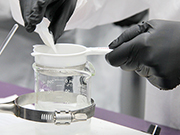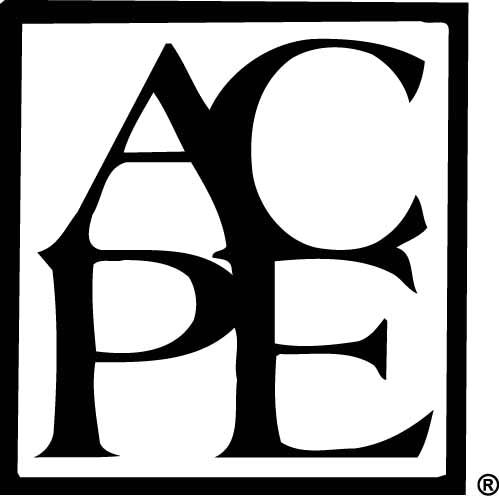The Science of Pharmaceutical Compounding: Technician Training - Home Study
 | Great news! In light of the recent revisions to USP standards, we will be updating the home study to reflect these changes, in order to provide you with the resources needed to maintain compliance. You may enroll in the home study today and will be notified once the updated materials are available. |

Learning Objectives | Contributors
| This home study serves as a prerequisite to the live activity, The Science of Pharmaceutical Compounding: Technician Training. While attendance at the live event is not mandatory to receive home study CE credit, participation in the live event will afford the participant an opportunity to practically apply the activity’s core concepts and to practice, under expert supervision, the preparation and quality control verification procedures related to a broad range of non-sterile dosage forms. |  |
Please note: If you are attending the live event, your home study can be accessed by navigating to the course page for your specific live event location & date. The version of the home study on this page is for those who are not attending a live event.
This knowledge-based activity will provide compounding technicians with the necessary skills for the safe handling of non-hazardous and hazardous drugs while preparing non-sterile dosage forms. Activity content surrounding relevant law, regulatory guidelines, and standards of practice is subdivided into a unique system, referred to as System P, which includes the following divisions: Personnel, Property, Procedure, Process, Preparation, and Patient. This section of the activity places emphasis on quality assurance and quality control through the implementation of standard operating procedures.
The activity engages the technician to understand the concept of compounding by composition (an in-depth look at the chemistry of solutions and dispersions in the form of suspensions and emulsions) and then apply this concept to the compounding of solid, semi-solid, and liquid dosage forms. Preparatory procedures are then related to the combination of route of delivery, dosage form, preparatory state-of-matter, and the final state-of-matter of the compounded medication. Finally, there is an exploration in excipient selection, function, and application in relation to composition, dosage form, and route of delivery.
Pharmaceutical calculations are presented in detail, providing a required level of quality control and quality management during the compounding process. Finally, the participant is introduced to process development, which leads to the establishment of pharmacy practice-specific master formulation records. A master formulation record template is also introduced and serves equally well as a process development record and compounding record that can be implemented in everyday practice.
Intended audience
Learning Objectives
FOR TECHNICIANS:
- Recall standard operating procedures associated with the management and safe handling of non-hazardous and hazardous drug compounding as indicated in the United States Pharmacopeia, covering Chapter <795> and related chapters.
- Relate dosage form chemical composition (solutions and dispersions; suspensions and emulsions), routes of delivery, and delivery systems to preparatory procedures for non-sterile compounded medications.
- Recognize the relevance of excipients and their function(s) related to chemical composition, routes of delivery, and delivery systems.
- Repeat pharmaceutical calculations, in support of a performance checking system between pharmacist and technician, related to specific dosage forms and preparatory procedures.
- Repeat laboratory practices, procedures, and preparatory techniques related to the day-to-day activities of a compounding technician, and to the compounding of non-sterile dosage forms.
- Recognize the importance of deactivation, decontamination, disinfection, and cleaning procedures for non-hazardous and hazardous drug compounding.
- State the use of personal protective equipment for non-hazardous and hazardous drug compounding.
- Recall general personnel roles and responsibilities, including medical surveillance and a hazardous drug management information program.
- Repeat written procedures related to process development documents that lead to the establishment of a master formulation record.
- List the requirements of a master formulation record and compounding record.
Editors
 NEIL COHEN, BSc NEIL COHEN, BScCE Program Developer Disclosure: None |  |
CONTRIBUTORS:
|
This learning activity has received financial support from MEDISCA Inc. in the form of an educational grant.
Total CPE Credits (home study): 20 CPE Hours = 2.0 CEUs
Joint Providership Status (CPE Consultants, LLC / LP3 Network)
Home study activity type: Knowledge-based
Home study UAN: 0864-9999-18-050-H07-T for technicians
Home study CPE credits: 20 CPE hours = 2.0 CEUs
Release date: April 21, 2018
Expiration date: April 21, 2021
To receive CPE credits for the home study, participants must complete a learning assessment with a score of 70% and submit a completed evaluation.
 | CPE Consultants, LLC is accredited by the Accreditation Council for Pharmacy Education as a provider of continuing pharmacy education. |
Price
There are no refunds, returns, or transfers upon purchase of the home study.

 Facebook
Facebook X
X LinkedIn
LinkedIn Forward
Forward